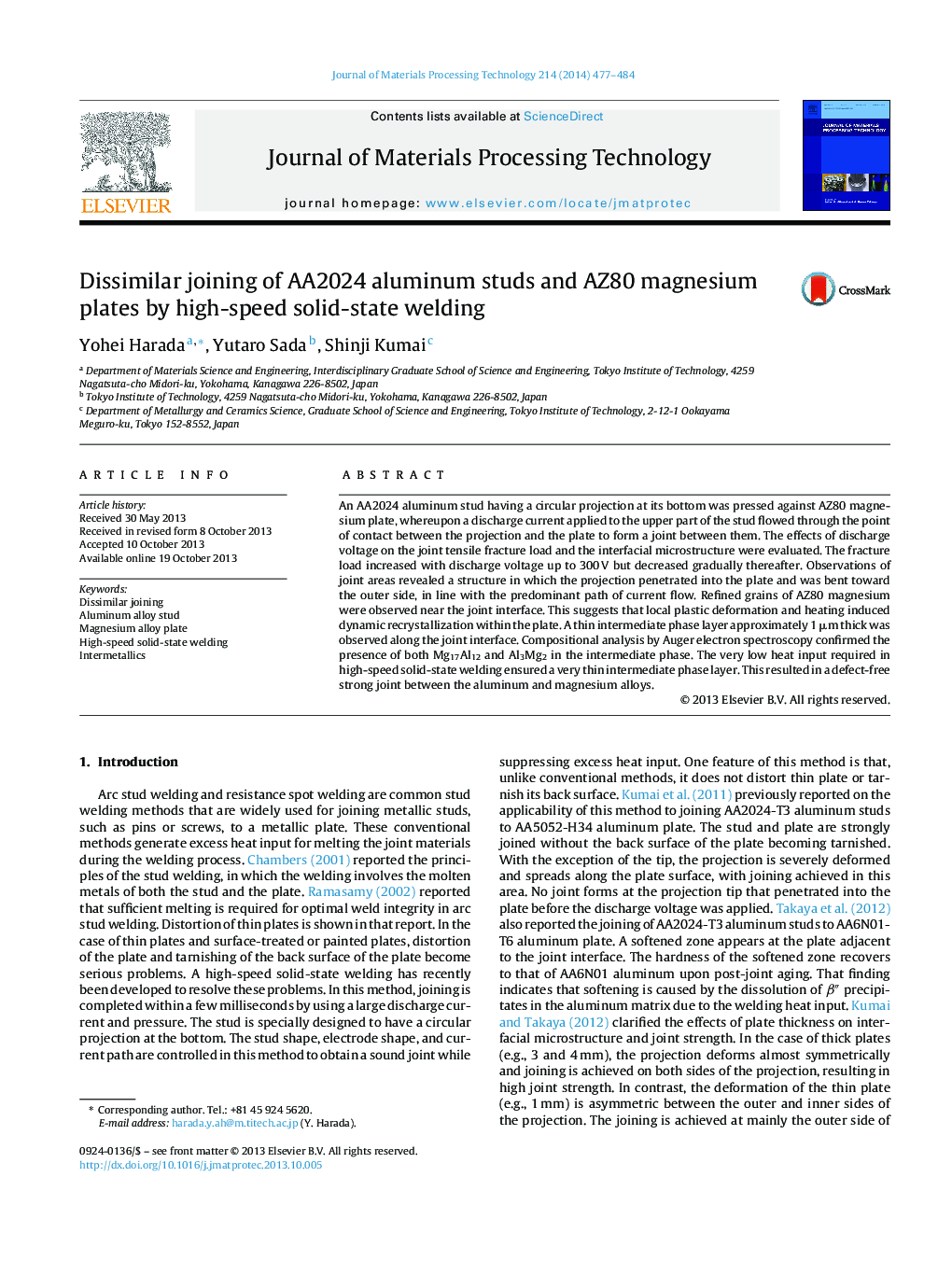| Article ID | Journal | Published Year | Pages | File Type |
|---|---|---|---|---|
| 10418730 | Journal of Materials Processing Technology | 2014 | 8 Pages |
Abstract
An AA2024 aluminum stud having a circular projection at its bottom was pressed against AZ80 magnesium plate, whereupon a discharge current applied to the upper part of the stud flowed through the point of contact between the projection and the plate to form a joint between them. The effects of discharge voltage on the joint tensile fracture load and the interfacial microstructure were evaluated. The fracture load increased with discharge voltage up to 300 V but decreased gradually thereafter. Observations of joint areas revealed a structure in which the projection penetrated into the plate and was bent toward the outer side, in line with the predominant path of current flow. Refined grains of AZ80 magnesium were observed near the joint interface. This suggests that local plastic deformation and heating induced dynamic recrystallization within the plate. A thin intermediate phase layer approximately 1 μm thick was observed along the joint interface. Compositional analysis by Auger electron spectroscopy confirmed the presence of both Mg17Al12 and Al3Mg2 in the intermediate phase. The very low heat input required in high-speed solid-state welding ensured a very thin intermediate phase layer. This resulted in a defect-free strong joint between the aluminum and magnesium alloys.
Keywords
Related Topics
Physical Sciences and Engineering
Engineering
Industrial and Manufacturing Engineering
Authors
Yohei Harada, Yutaro Sada, Shinji Kumai,
